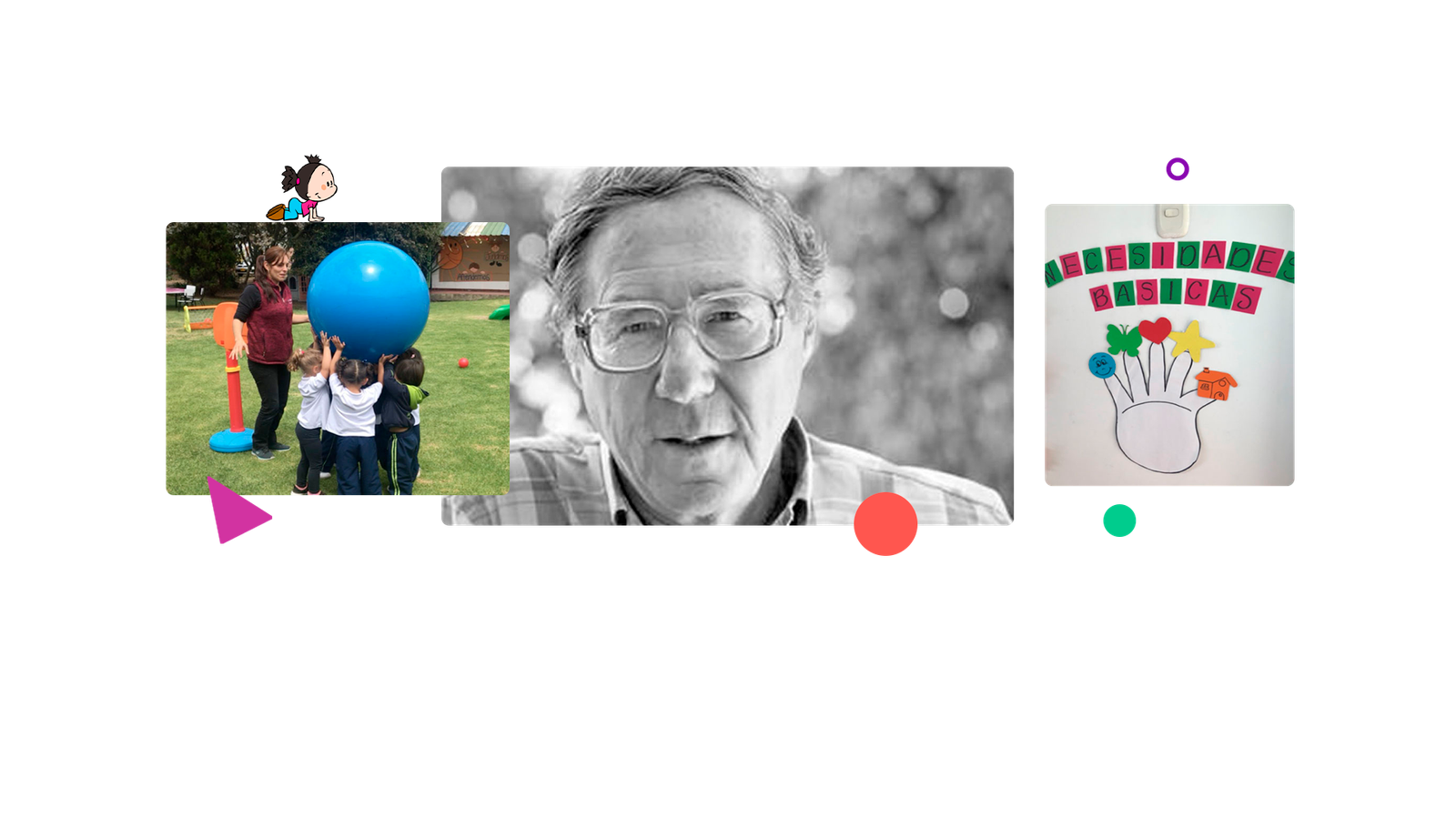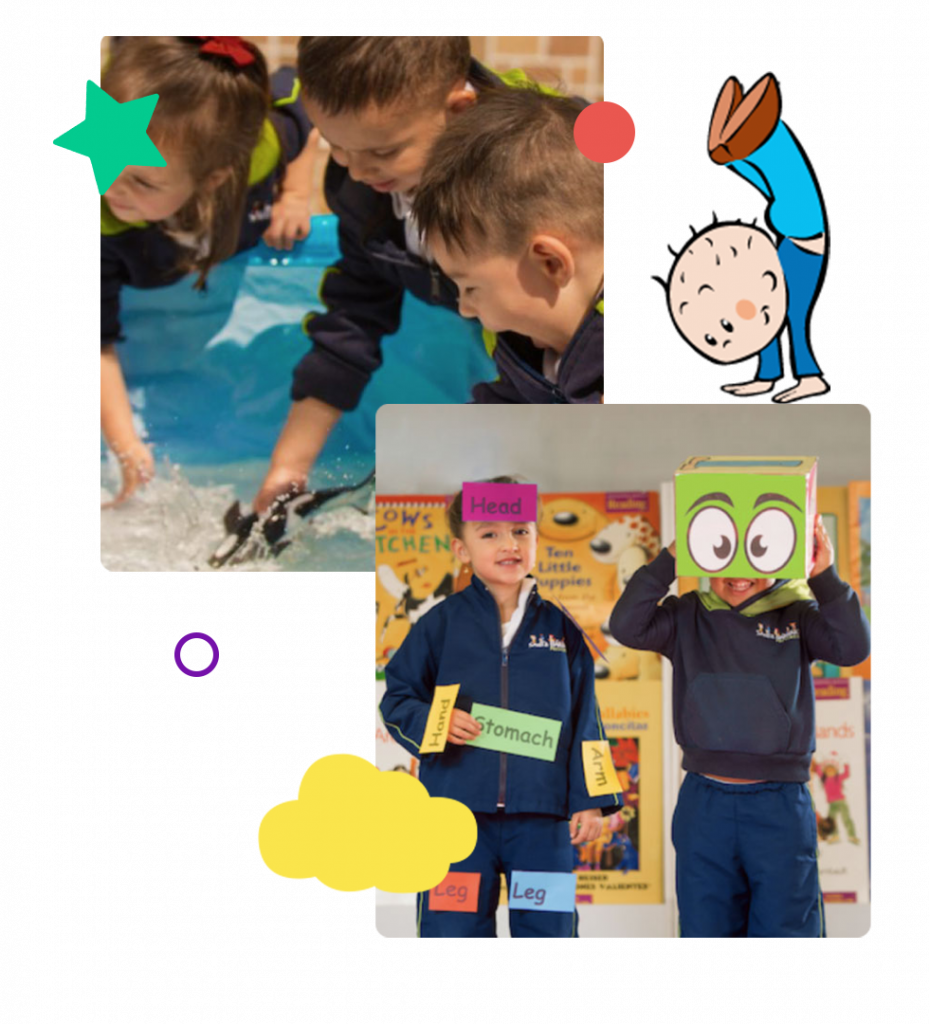The best choice for your children
Educational Project
We work on projects as a transversal axis in all areas of development, where we promote usefulness of knowledge, fun activities for children integrated into the curriculum, and individual and team learning.
Our methodology seeks the inner motivation of the child and we believe in the importance of meeting their basic needs for safety, love, power, freedom and fun on a daily basis. For this, it is important that you have a group of friends, have fun, be recognized for your achievements, feel respected, make small decisions, be able to express yourself freely and learn to solve problems. All this leads us to have happy, responsible and successful children.

Our model
Choice Theory
The Choice Theory was created by Dr. William Glasser and throughout the world various academic institutions are certified to offer more comprehensive and lasting educational forms. In the words of the American psychiatrist, the psychology of external control is based on the punitive, the tax, and also destroys interpersonal relationships. By contrast, the psychology of inner control seeks relationships based on appreciation and trust, establishing unparalleled connecting links.
The Choice Theory, as its name says, aims to teach that we can always choose; from small things to big decisions. With the children we seek that they learn to recognize themselves, that they recognize themselves among others, that they learn to take responsibility for their small choices and use constructive habits to relate. If our children learn to build meaningful relationships in their lives, they will always be happy children.
How does a child live Choice Theory in the garden?
The first thing we do is put together with the children a class constitution, where coexistence agreements are embodied in the garden. This is presented through characters that children understand easily. Here are some examples of our characters and agreements:
I am a fireman: I help others.
I am a mechanic: I repair my relationships
I am a doctor: I listen carefully
I am a teacher: I speak with love.
Through the Coexistence and Values Program, children learn about their basic needs. According to Theory of Choice, we talk about 5 needs that are remembered according to these elements:
- The heart: represents the need for love and belonging. The child feels loved and appreciated, is part of a group (his family, his friends, neighbors, etc.) and has a sense of belonging to it.
The star: represents the need for power and recognition. This need refers to the importance of the child achieving satisfaction in each of their personal challenges and achievements, while being recognized by others.
The butterfly: represents the need for freedom. It is the need where each child understands what he can choose, make small decisions and be autonomous.
Happy face: represents the need for fun. Children recognize the different ways in which they like to have fun. Sometimes they are different forms from others.
The house: represents the need for survival. This need refers to the safety of the child. The house refers to survival activities such as sleeping, eating, staying in safe places, etc.
Additionally, multiple activities are often carried out using carts to symbolize the importance of interior control, as well as dominoes, to understand that all action has consequences. And in Santa Barbara, brain activation goes beyond academic knowledge! Undoubtedly, the learning acquired during early childhood is key to development before the child’s personality crystallizes at 8 years of age.

Our dimensions
Development Areas

This dimension is focused so that children can express their knowledge and ideas about things, situations, people. Its purpose is that children can establish relationships, satisfy needs, form emotional bonds, express emotions and feelings.
For this reason we provide playful opportunities, where children develop their mother tongue to socialize with their peers, express their ideas, listen to others, read their surroundings and make their first strokes.
Also in our garden, children begin in English as a second language with a teacher specialized in the development of vocabulary and expression, through stories, songs, games and strategies of Integrated Visual Learning.
That is why we believe that the daily use of language in children is a tool for expression, communication and understanding.
Children develop coordination between vision, hearing and motor skills (gross and fine), as well as a taste for art and movement, through gymnastics, painting, dance and music. This promotes the optimal development of all academic areas.
The construction of children’s knowledge occurs through contact with the world. This always starts from previous learning and previous experiences he has had, serving as a support for the construction of future knowledge. The role of the family plays a very important role; so that the child develops the symbolic ability to represent objects from the real world and then pass it on to mental actions. In this way, cognitive processes such as perception, attention and memory are consolidated.
We develop logical and scientific thinking by exploring, observing, analyzing, experimenting and manipulating objects, through useful activities for children. This helps them better understand and appreciate their world around them. Among other skills, children learn to count, classify, group, identify and serialize in activities as simple as going to the supermarket.
“We work better with those we appreciate and respect, with whom we laugh and allow us to make decisions, and with whom we feel confident.”
William Glasser, M. D.
Los niños desarrollan la coordinación entre la visión, la audición y la motricidad (gruesa y fina), así como el gusto por el arte y el movimiento, a través de la gimnasia, la pintura, la danza y la música. Esto promueve el óptimo desarrollo de todas las áreas académicas.
At Santa Barbara Preschool we use the ideas of the Theory of Choice and the entire community of parents, children and teachers is trained in these ideas. The teachers carry out the certification process with the William Glasser International Institute; Families are trained through parents’ schools, and children through the Coexistence and Values Program.
Through this program, children begin to identify their basic needs, begin their processes in face of their internal responsibility, and practice their abilities to dialogue, negotiate and find solutions to small daily situations, always keeping in mind the importance of interpersonal relationships such as way for your own happiness.
Within the aesthetic dimension, the relationship of children with the world is of great importance. For this reason we make a class constitution through which the child can look at himself, others and his environment.
This dimension refers to the importance of socialization and affectivity in the harmonious and integral development in the first years of life. This development plays an essential role in the identity of your personality, expression of feelings and your empathy with others and their environment.
Our methodology seeks the inner motivation of the child and we believe in the importance of meeting their basic needs for safety, love, power, freedom and fun on a daily basis. For this, it is important that you have a group of friends, have fun, be recognized for your achievements, feel respected, make small decisions, be able to express yourself freely and learn to solve problems. All this leads us to have happy, responsible and successful children.
Discover the experience
Project Work
Santa Barbara Preschool uses the “Project Work” methodology to promote learning that is useful for children and helps them to empower all areas of development.
Teachers create playful spaces for children to research, create, observe, compare, explore, and ask. In this way, take an active role and be builders of your own learning.
Boys and girls can make friends, build concepts with others, solve problems, and express their feelings. They learn to use knowledge and make direct connections to the real world. This allows them to explore, inquire, know, compare and observe.
It is also a methodology that fosters autonomous, independent children, with the ability to choose what they like, what they want, what they feel, what they think and thus become the main actor in their lives. It is very important to highlight that the children are guiding the project according to their interests and tastes.
It is a methodology where children have fun all the time: Play becomes the main tool for learning. They perform role games in which they can be peasants, clowns or firefighters; They dress up, cook, paint, create rhymes, stories, riddles and much more.
Project work extends to the entire community: teachers, parents, friends. It allows the continuous interaction of parents, which is an unequaled advantage since they become witnesses and collaborators of the learning of their children. And teachers work as a team for the well-being of children.
“Abracadabra, let my body open”
“Artists in action”
“Space sailors”
Bilingualism
Bilingual Spanish - English
At Santa Barbara Preschool, through playful opportunities, children develop their mother tongue to socialize with their parents, express ideas, listen to others, read their surroundings and make their first strokes.
Children begin in English as a second language with specialized teachers in the development of vocabulary and expression, through materials and strategies based on IVL- Integrated Visual Learning.
We started the bilingual process at 2 and a half years old, developing in Spanish and English the 4 areas of language: listening, speaking, reading and writing. Specifically for the English area, children manage to understand the language, acquire new vocabulary, begin to express words and small sentences in their second language, begin reading and writing processes; in addition to beginning logical math and experiential science processes in English.



